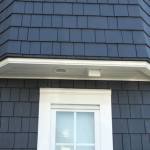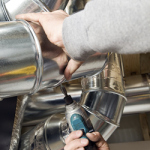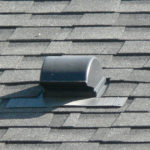 It’s the time of year again when many animals are looking for a nice warm, dry spot to give birth and raise their young. Guess what – attics are one of the prime locations for rodents.
It’s the time of year again when many animals are looking for a nice warm, dry spot to give birth and raise their young. Guess what – attics are one of the prime locations for rodents.
Already, all kinds of pests have been looking for easy ways to get into an attic. During the summer wasps and bees can enter through small openings. This can be a huge problem. A recent example: a home in Boulder, Colorado had a hive with 40,000 bees in the soffit.
In the fall, rodents of all sizes, including rats and squirrels, will head indoors seeking protection from the colder weather. The entry points in many cases are the soffit and roof vents that simply open to the outside. Once inside a house mice and rats will breed quickly, depositing large amounts of toxic droppings.
Did you know that in one year a pair of rats might have thousands of descendants? Each rat drops 40-50 pellets a day!
Vent outlets can also provide a cozy dry spot for birds to make nests. Once the nest is built the vent is blocked and attic ventilation no longer flows correctly.
To stop these smaller critters from getting in use vents that have a damper. They act as a barrier to anything coming in from the outside. The addition of a screen will also prevent birds from building nests.
However, this time of year sees larger animals looking to break in, namely, raccoons.
Raccoons typically have up to six kits in April or May. They have a strong instinct to find or build a den to give birth in and will start searching in February or March. They look for an arid and toasty area that is safe and enclosed. An attic is about as good as it gets.
Overhanging trees are the obvious way an inquisitive mother will check out potential accommodations. But, they are extremely agile and can climb a downpipe just as well as a tree. They can walk along the top of a fence or wall, perhaps hop off a shed onto a porch and up onto the roof. Once they are up to the gutter, they are able to rotate their rear paws 180 degrees allowing them to hang on and check out any weak areas of the soffit.
They will also tour the roof, perhaps attempt to rip up some shingles, but chimneys and roof vents are obvious targets. Flimsy aluminum vents are something the raccoons can easily damage and even rip out entirely as they try to break in. The best vents that prevent this are the extremely durable plastic resin types that should be nailed down.
The most vulnerable area of the roof is where there are roof and soffit intersections or dormers. Those perforated aluminum soffit vents are especially easy for a raccoon to push up out of the way. They find the perforations easy to clasp with their claws as they scrunch and bend the aluminum panels. Once the soffit is out of the way, they are inside setting up house in the plush attic insulation.
To solve this, use tongue and groove wood planking and regularly spaced soffit vents or grilles that are nailed into place.
These precautions will save renovators, contractors and installers a lot of time and money.
Once raccoons are nesting in an attic they are very difficult and expensive to remove. The humane method is to have a professional trap the young while the mother is out foraging. The kits are then placed in a special cage that the mother can access and remove her young to a new location – hopefully not the neighbor’s attic!



